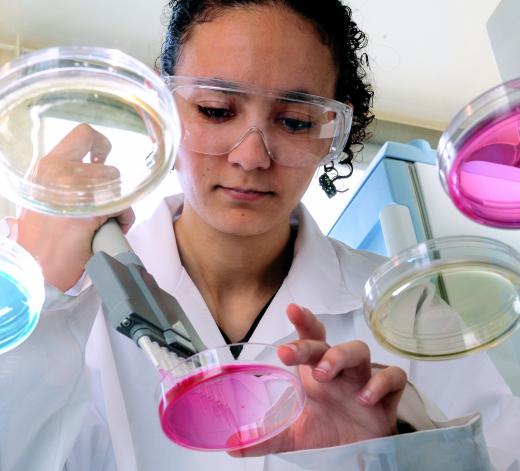What Is the Scientific Method?
 Michael Anissimov
Michael Anissimov
The scientific method is a way of acquiring knowledge through experiment. It is designed to cancel out standard human biases in reasoning by encouraging reproducibility and cross-checking. Scientists form hypotheses, or educated guesses, about aspects of the world, then test them. These experiments must be readily reproducible, so that other scientists can cross-check the data. After thorough testing, a hypothesis may be supported or contradicted by the data.
When a body of complementary hypotheses are proven correct, they may be integrated into a sort of "meta-hypothesis" called a theory. Theories can never be proven absolutely correct, and according to scientists, nothing can. This is where scientists are at odds with theists and spiritualists, who believe that through prayer or meditation one can access absolute truths. According to the scientific method, no theory is sacred, and even if thousands of experiments support it, one can still prove it wrong.

If a theory is extremely well confirmed over a long period of time and taken for granted among the vast majority of the scientific community, it acquires the status of a natural law or physical law. Physical laws, like “gravity makes things fall” are about as close to absolute certainty that we can obtain about the universe. As theories, especially solid empirical theories, make detailed quantitative predictions about the phenomena they seek to explain, it can be quite straightforward to refute them if they lack predictive power.
The scientific method is over a thousand years old, dating back to the work of Ibn al-Haytham (965-1039). Al-Haytham was a true pioneer, sometimes called “the first scientist,” who invented the scientific method and made significant contributions to over a dozen scientific fields, most notably optics.
The scientific method is not precisely defined, but almost all scientists agree that it involves iterations of these four steps: characterizations (observations and definitions), hypotheses, predictions, and experiments to test all of the previous parts of the sequence. The scientific method is not a strict recipe, but a fluid technique for uncovering truth.
AS FEATURED ON:
AS FEATURED ON:











Discussion Comments
However the scientific method is not six steps. People who teach it that way are killing it in the minds of their students, substituting a corpse in place of the real, living process of science. As a scientist I would rather be gagged with a spoon then sit and listen to a teacher talk about "science" in six boring, mind-numbing steps.
Aristotle 325 BC is credited with the scientific method, so how is Ibn al-Haytham credited with it 1300 years later in 1000 A.D.? Is this the law of abrogation?
The scientific method is often taught in 6 steps. Problem, Hypothesis, Research, Experiment, Procedure, Conclusion.
It is important for scientists to record their work accurately so that the experiment can be repeated later. Following the scientific method helps keep clear data.
Post your comments